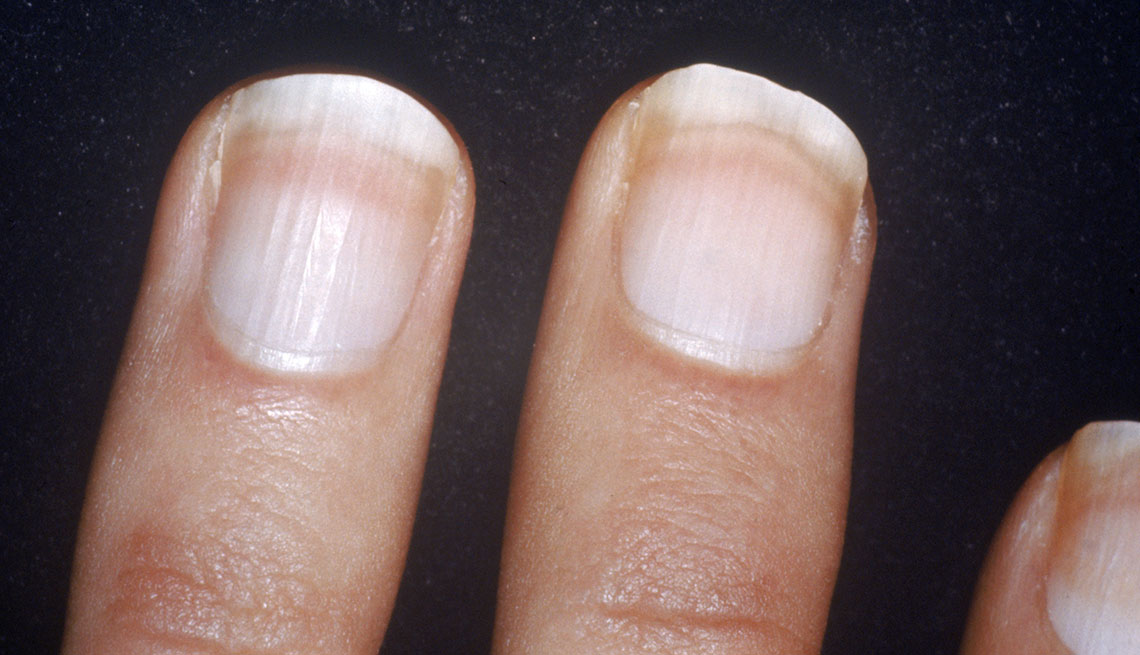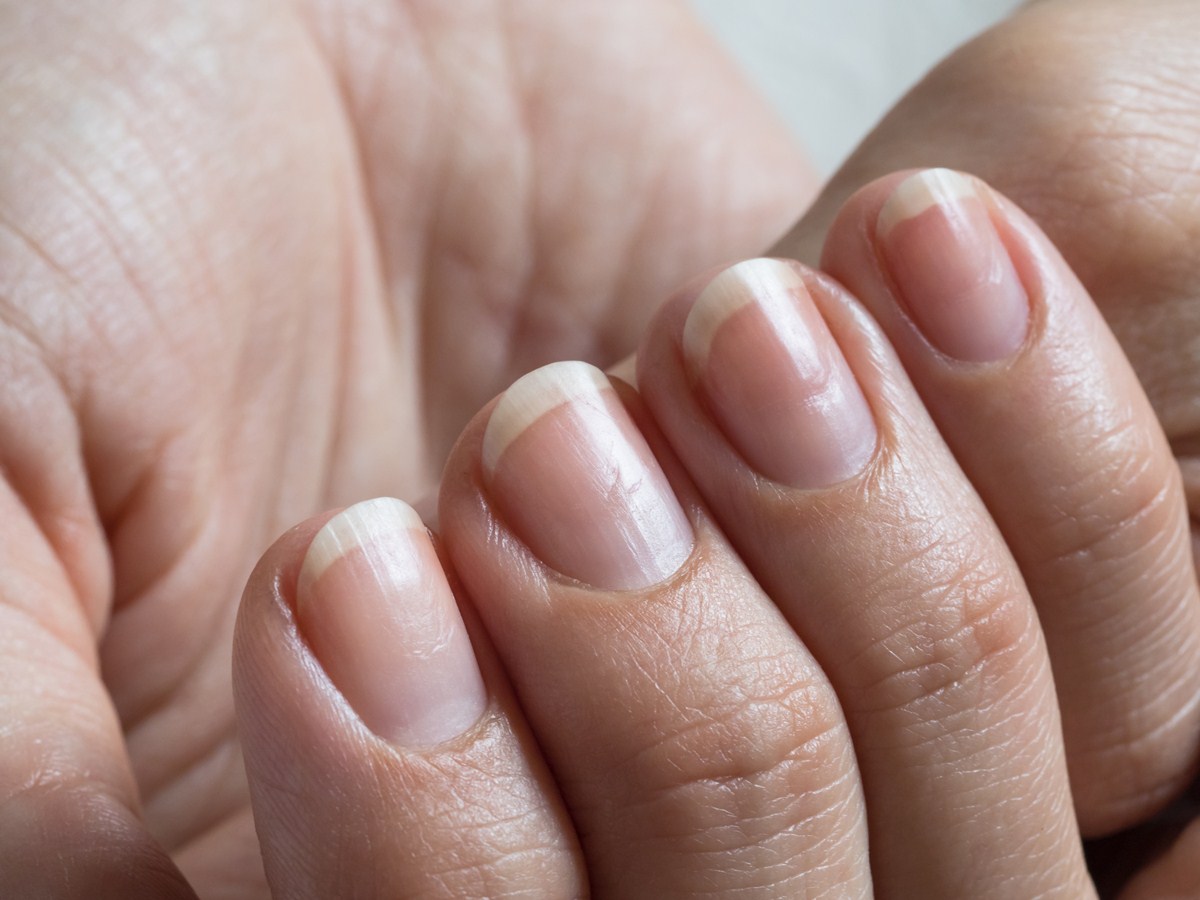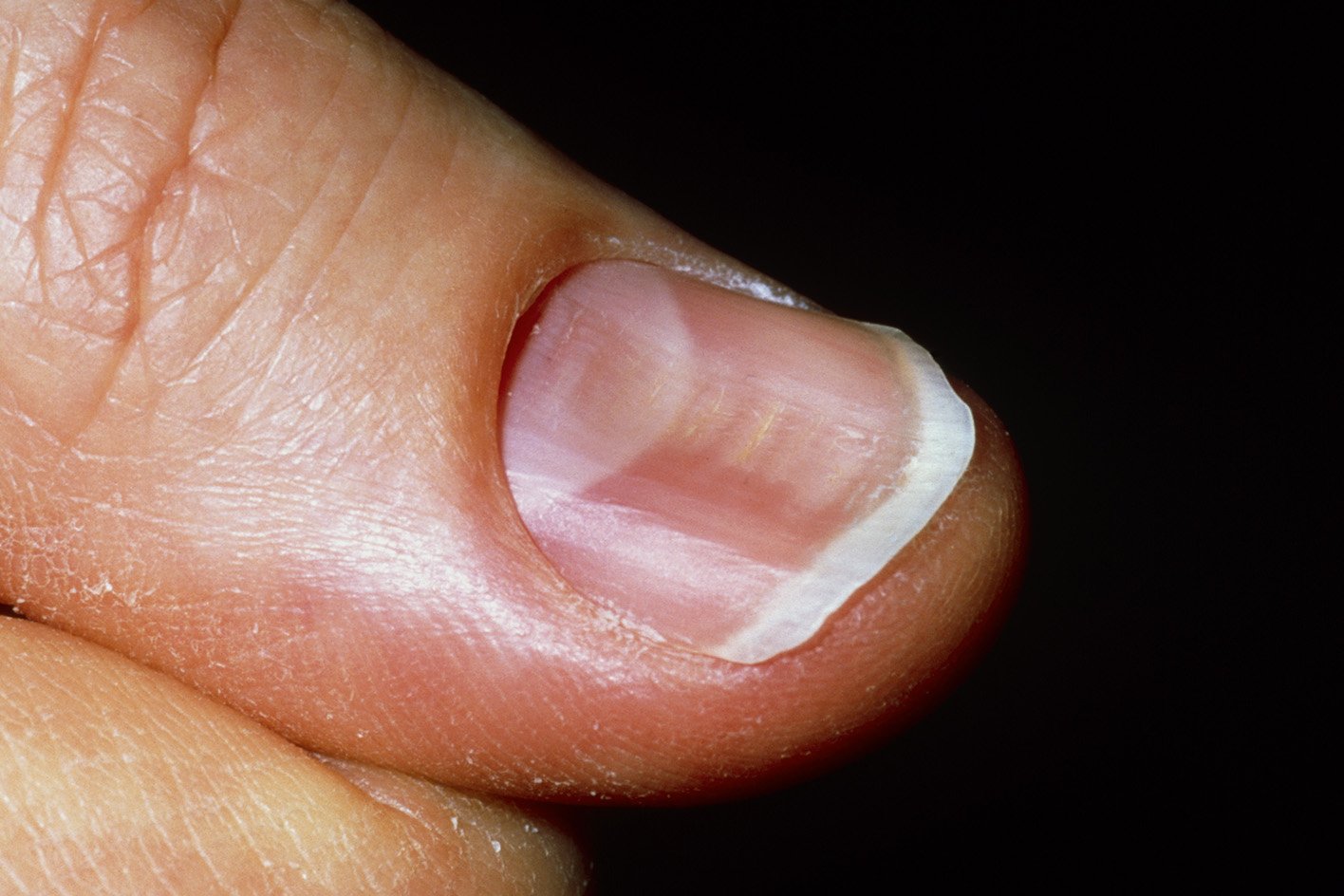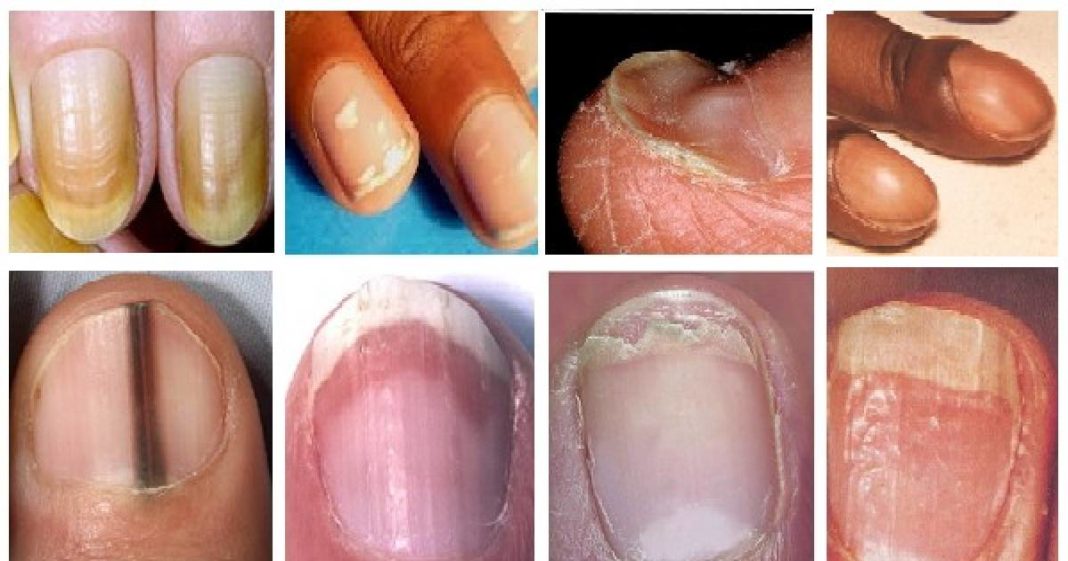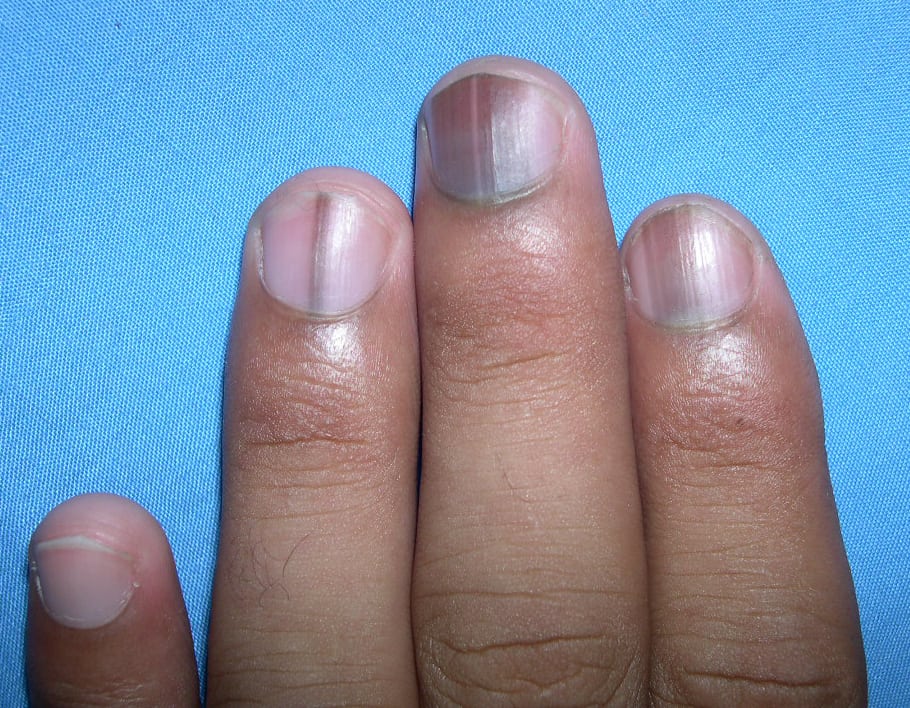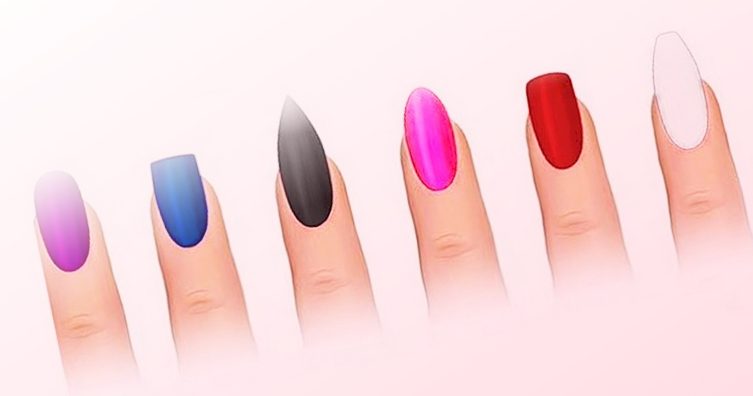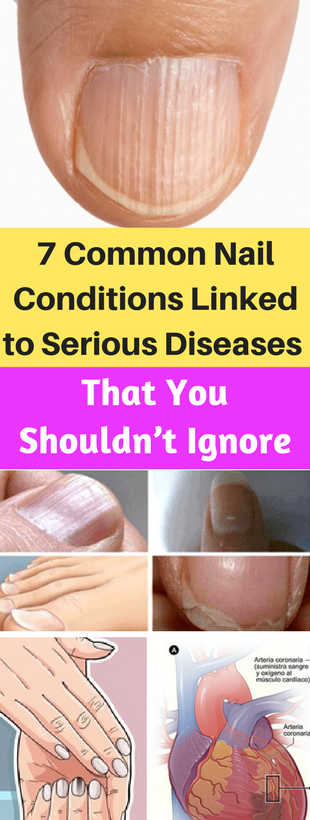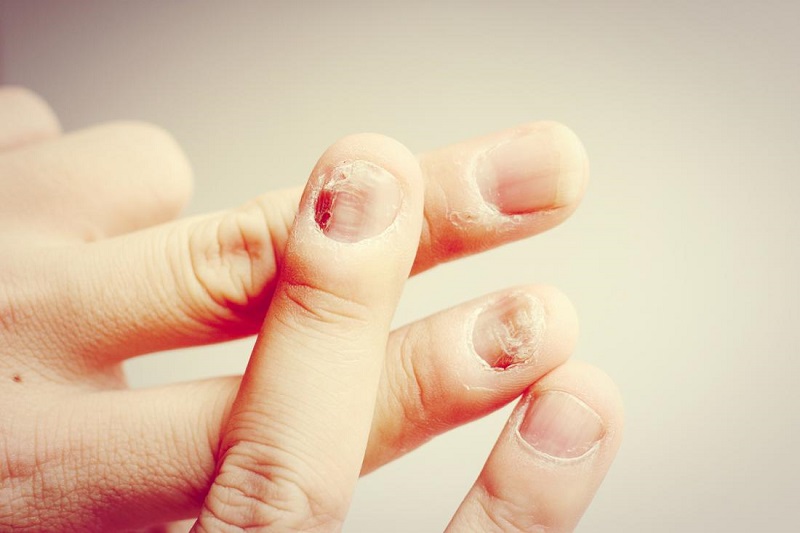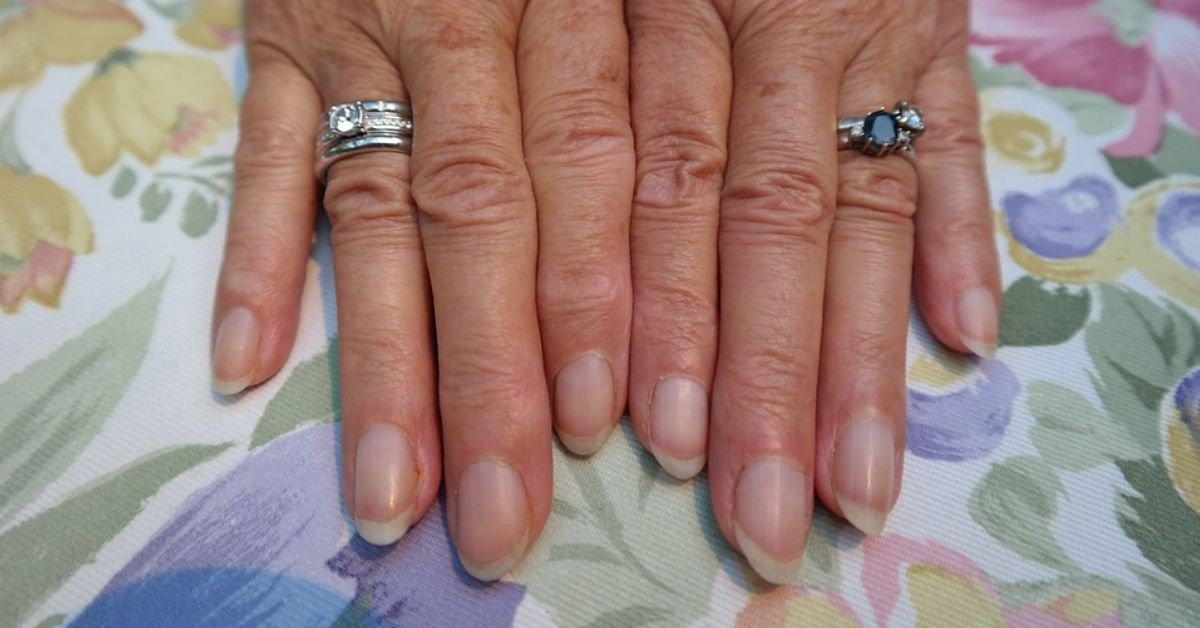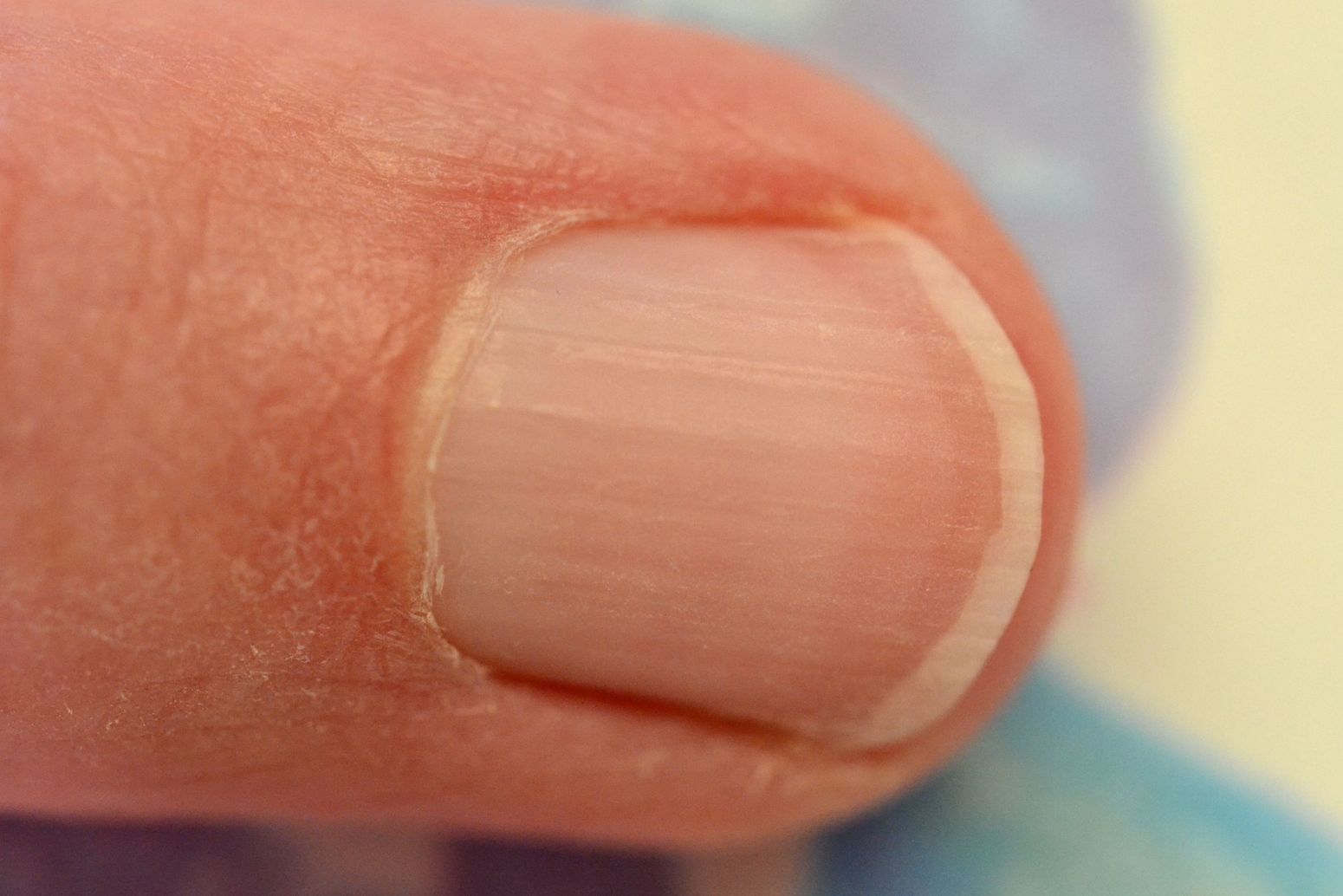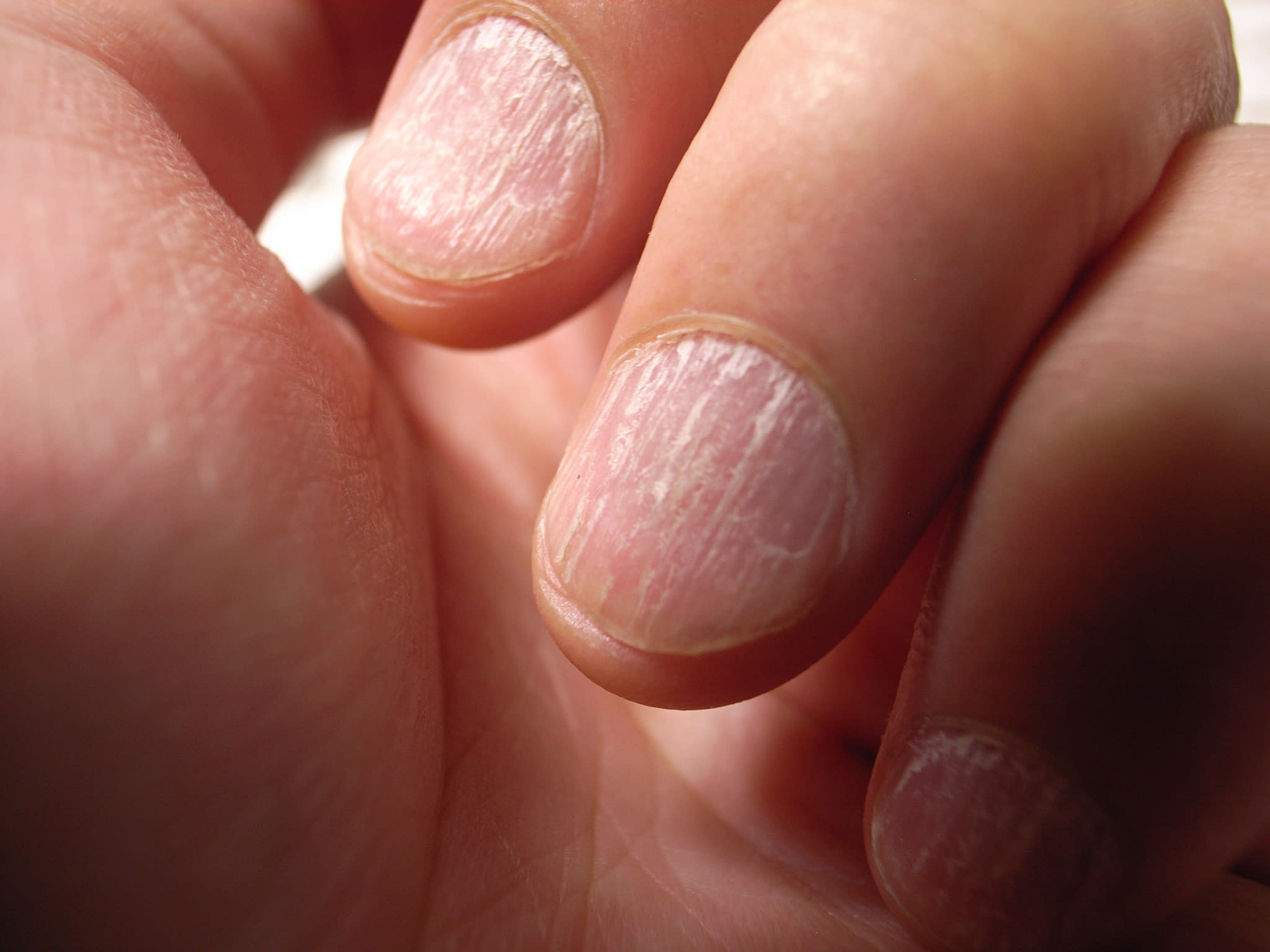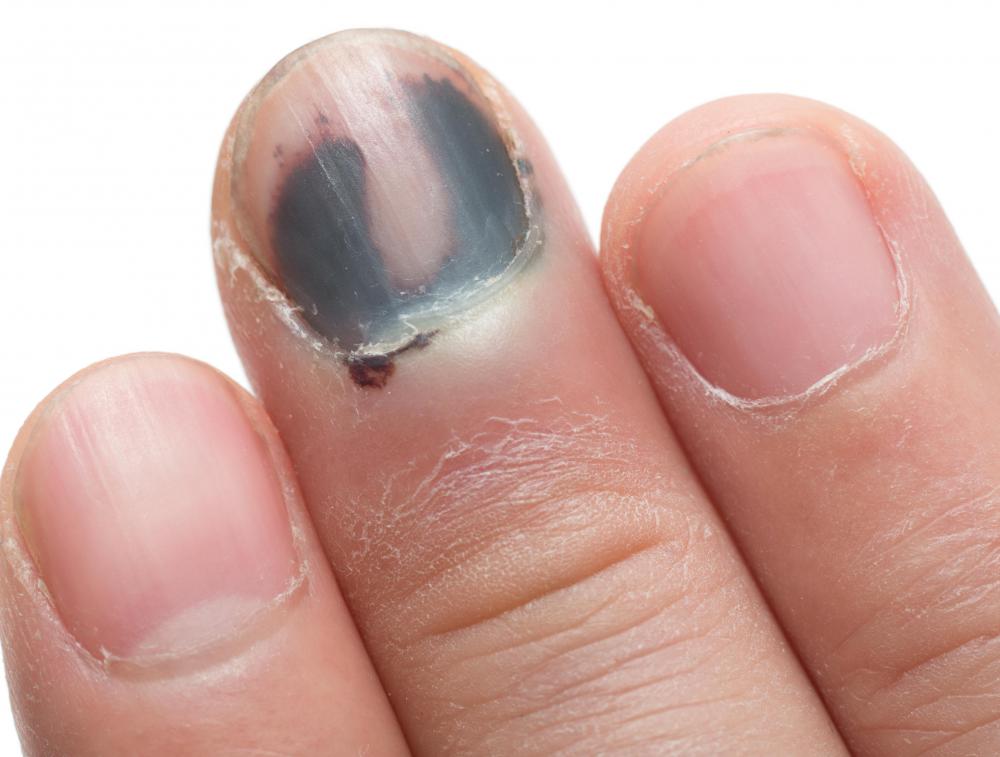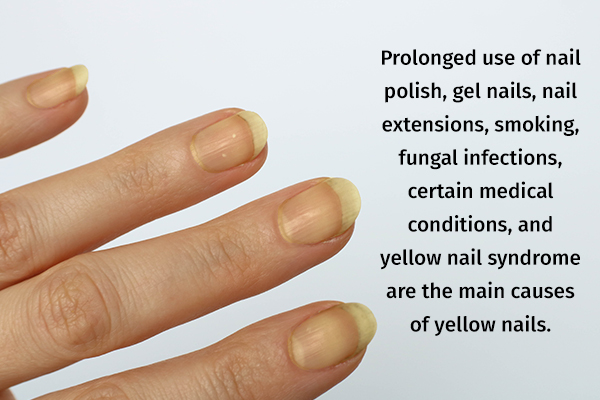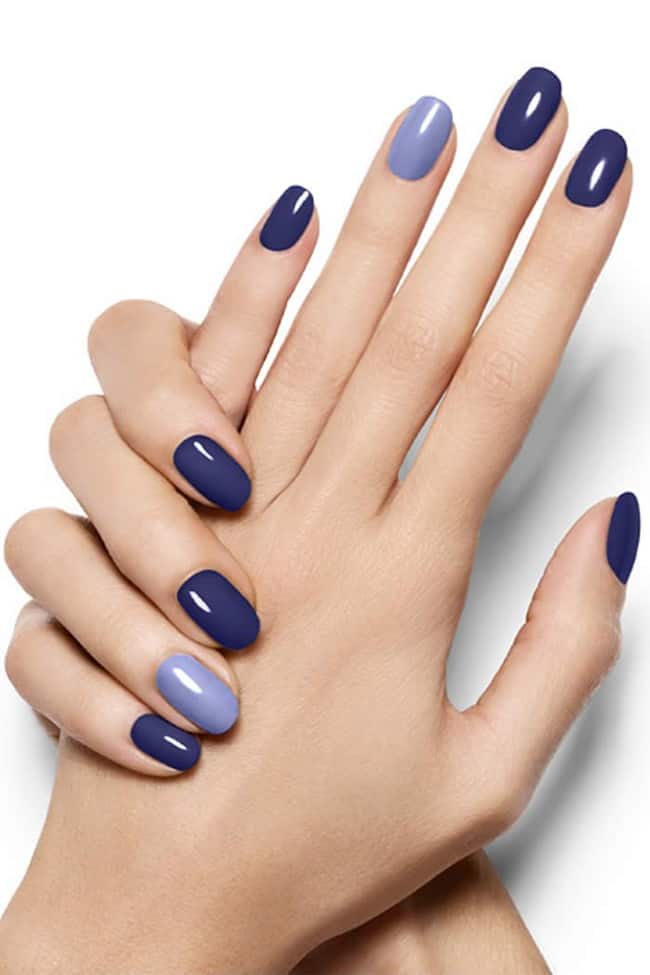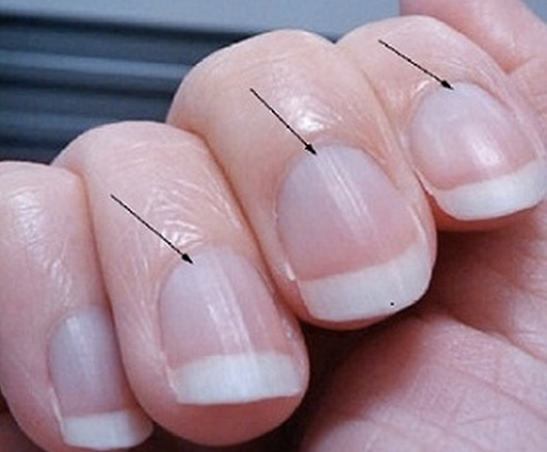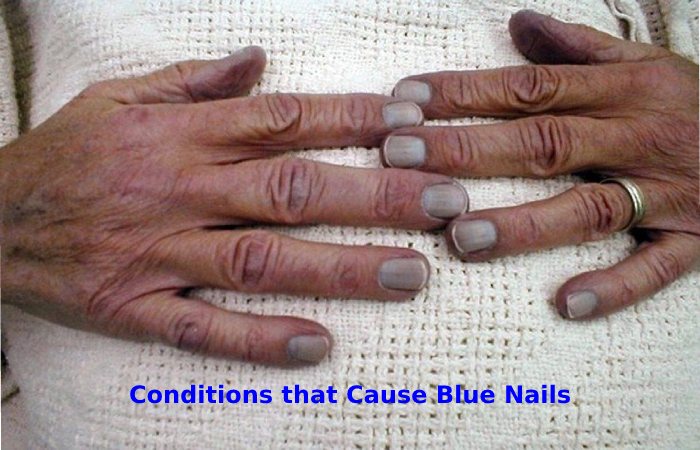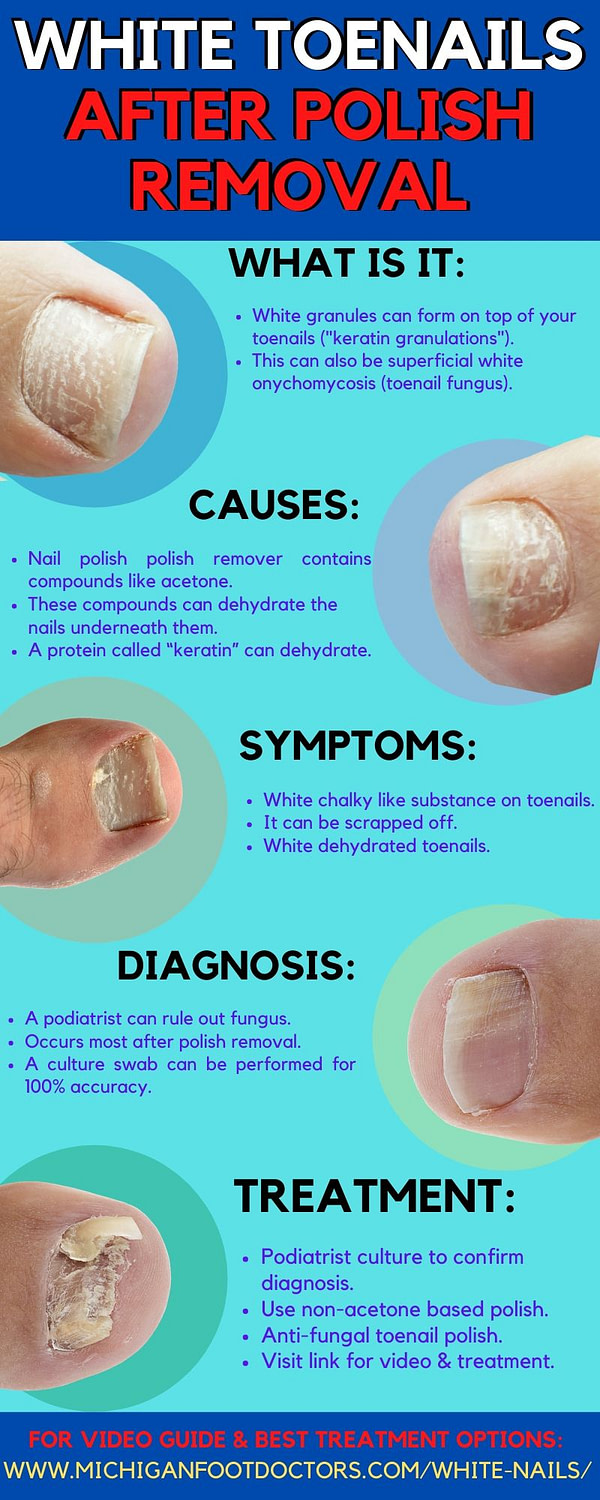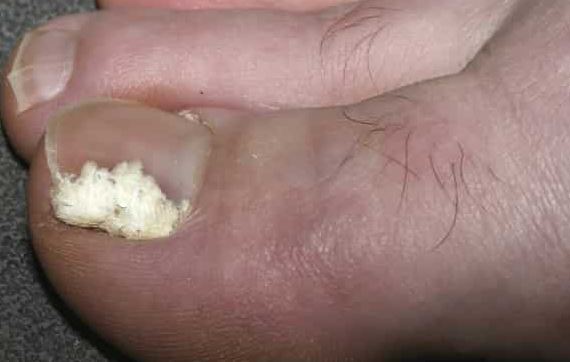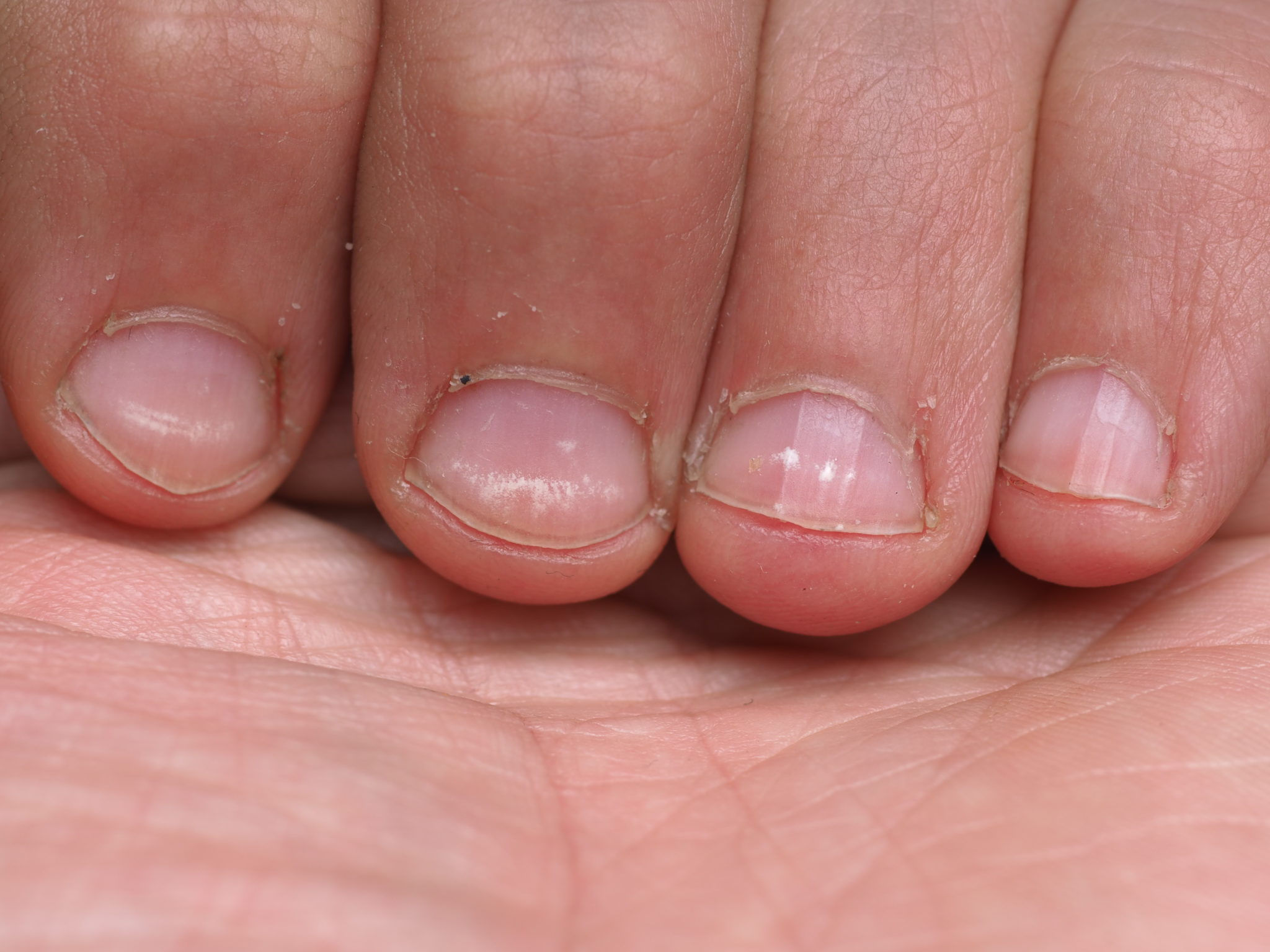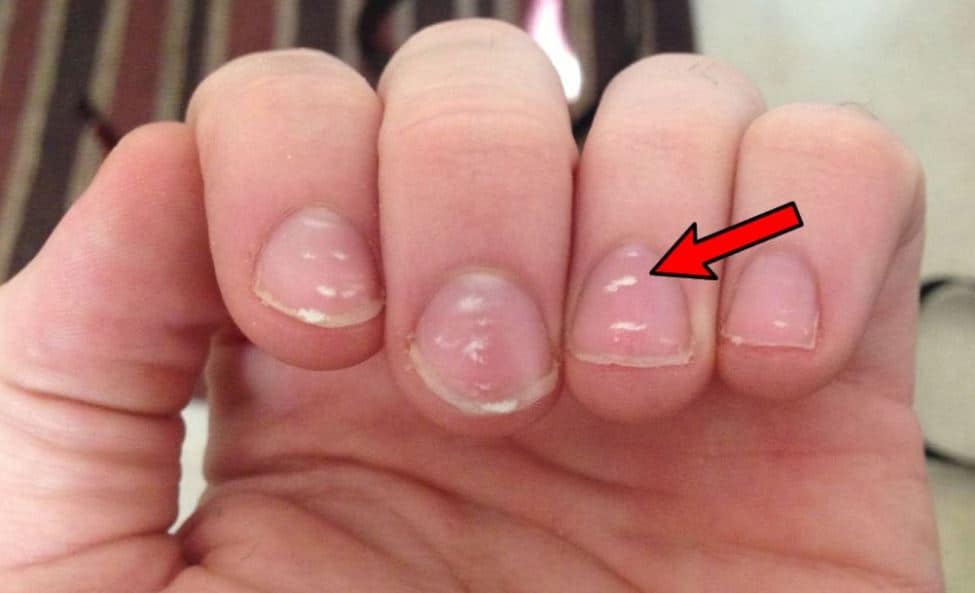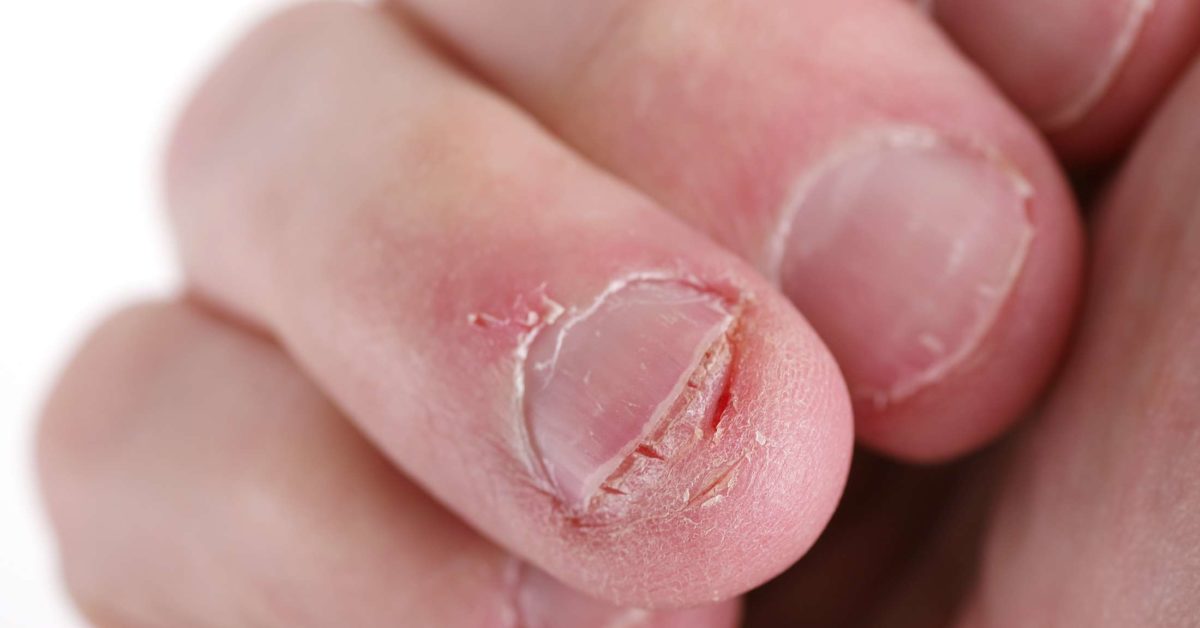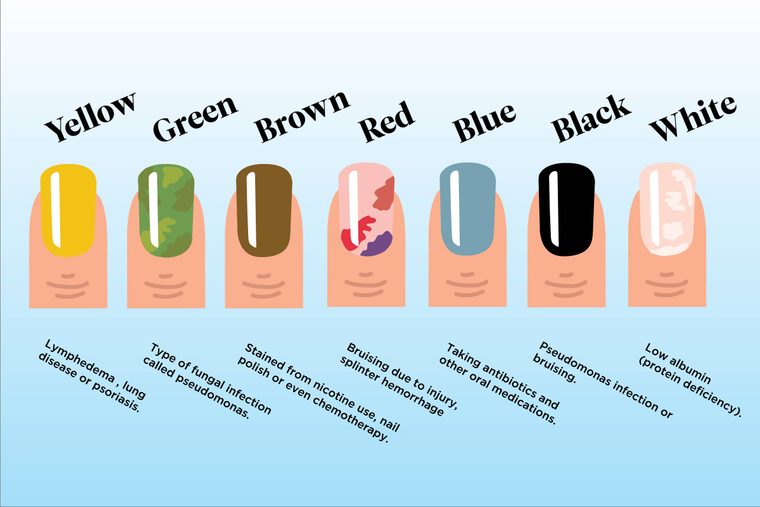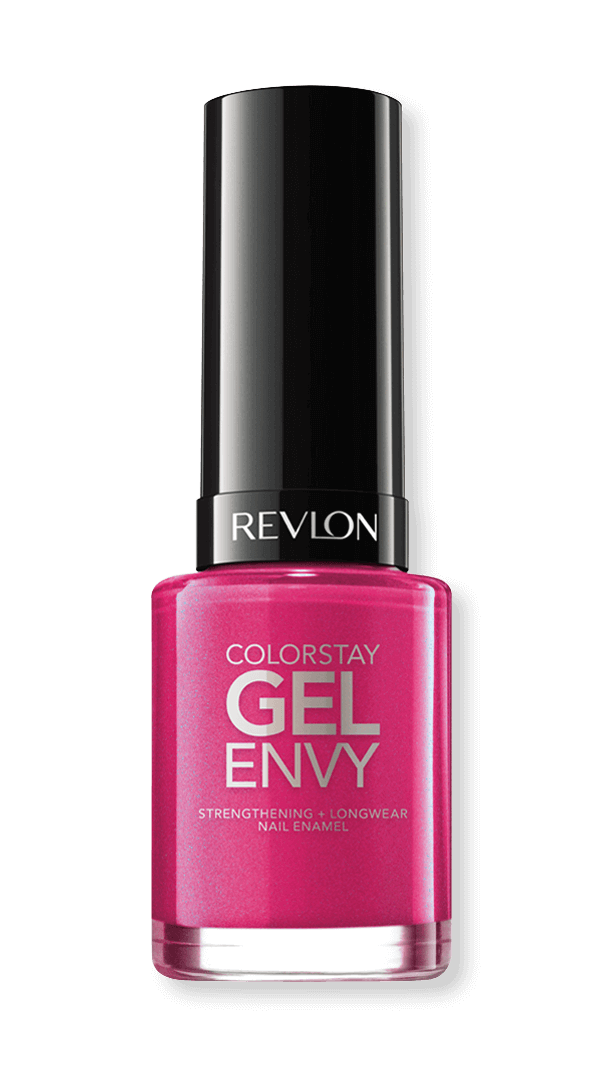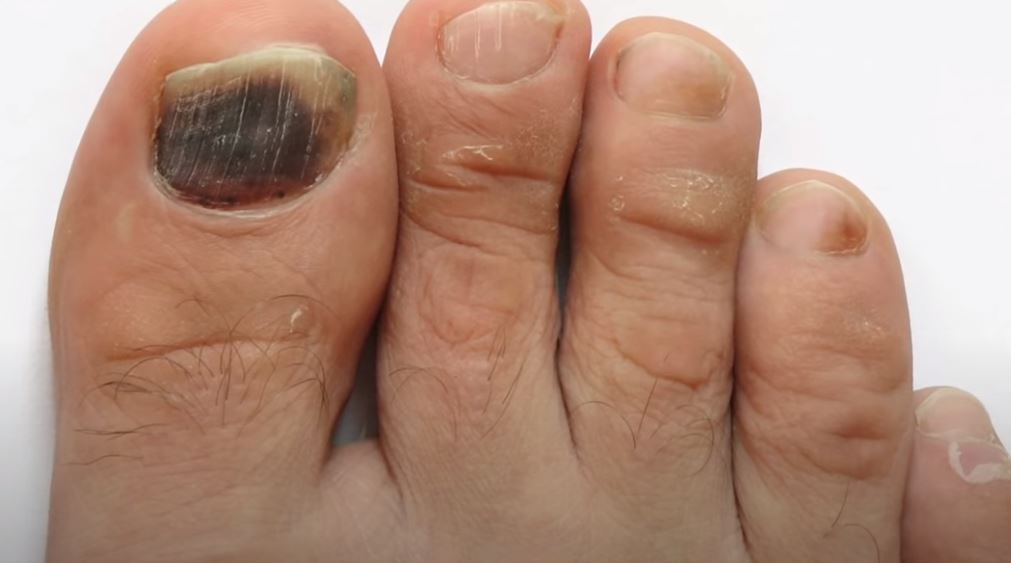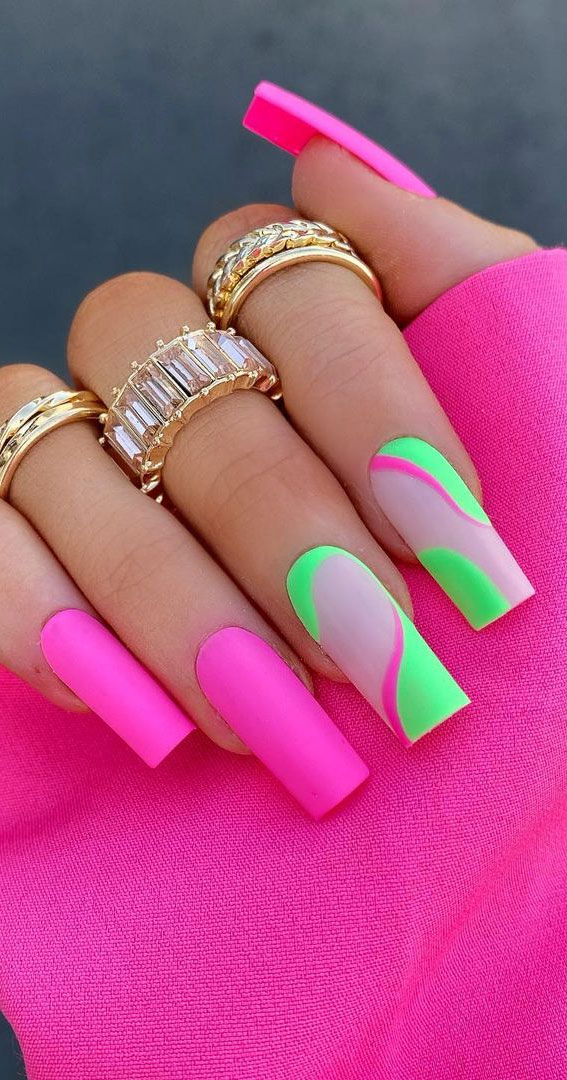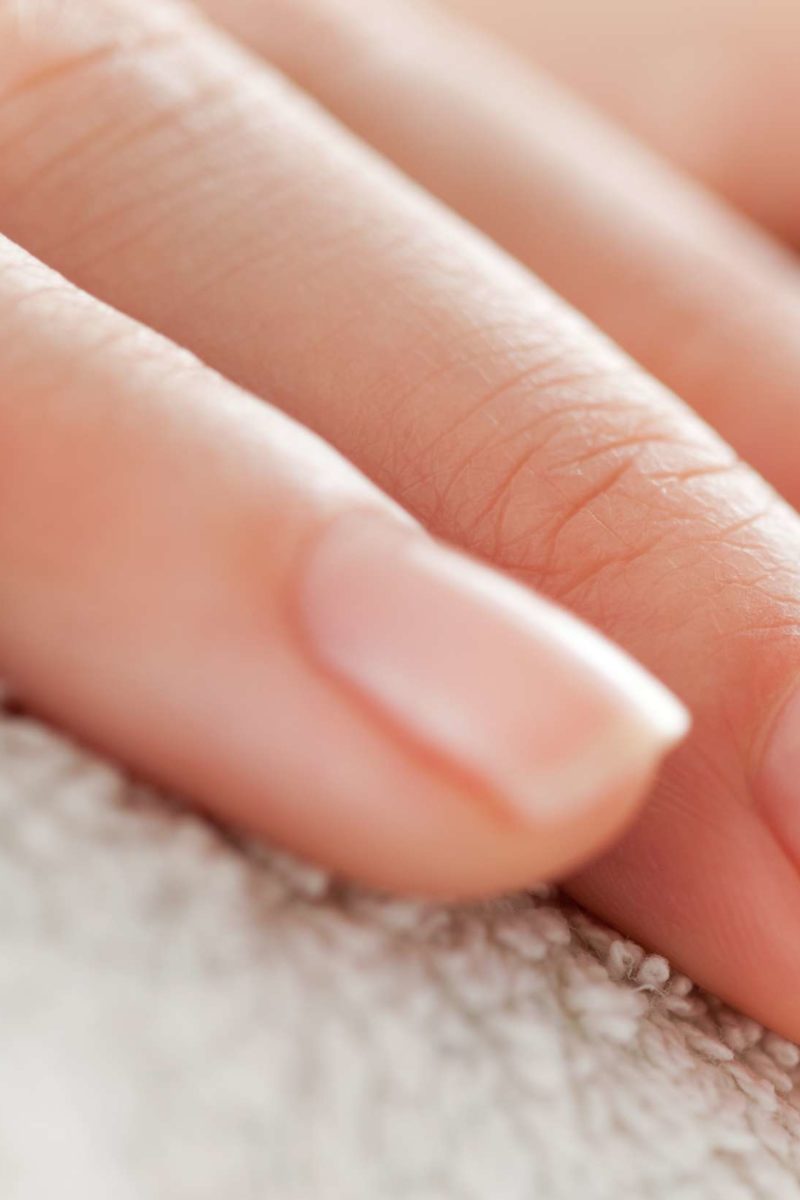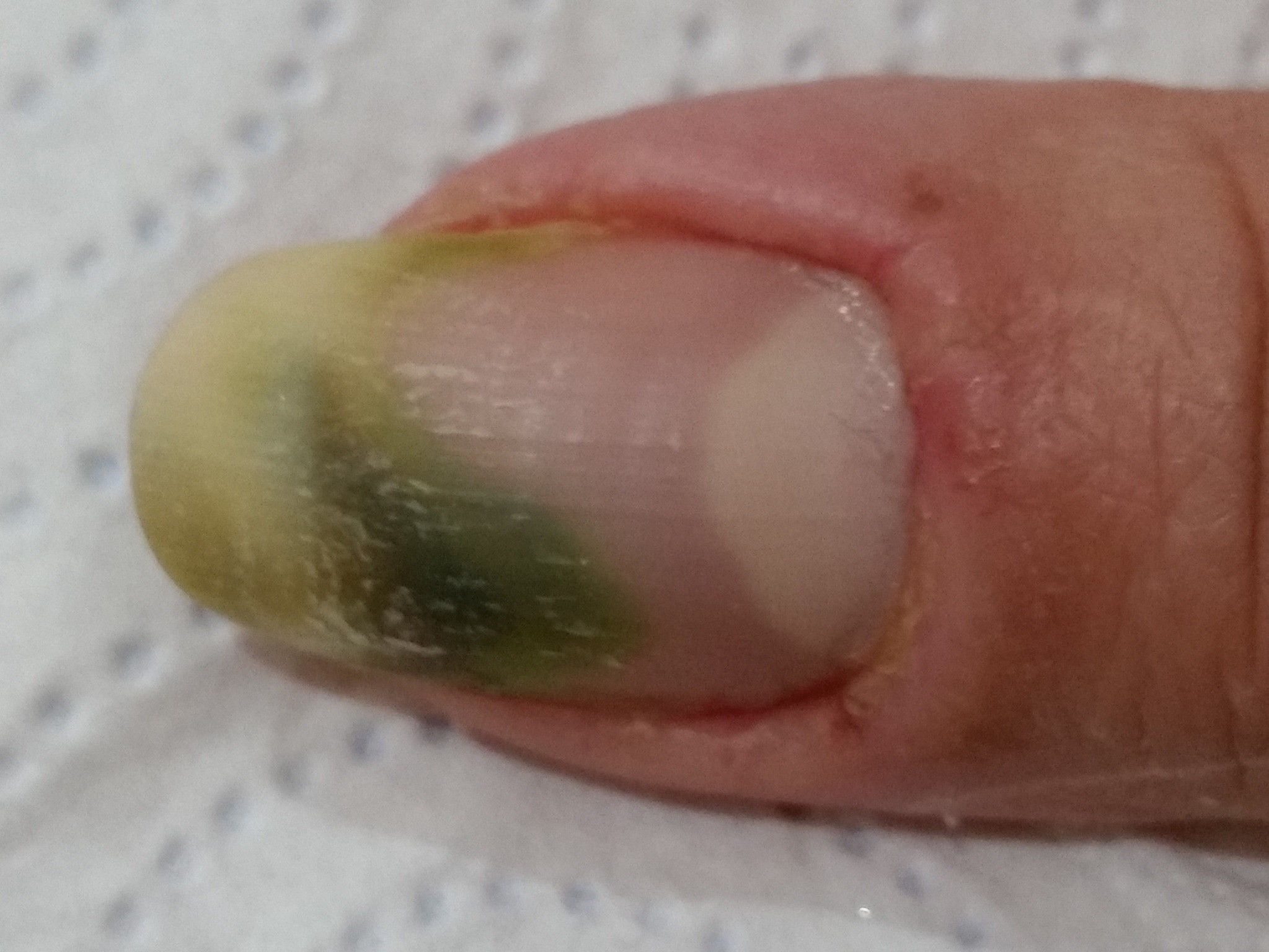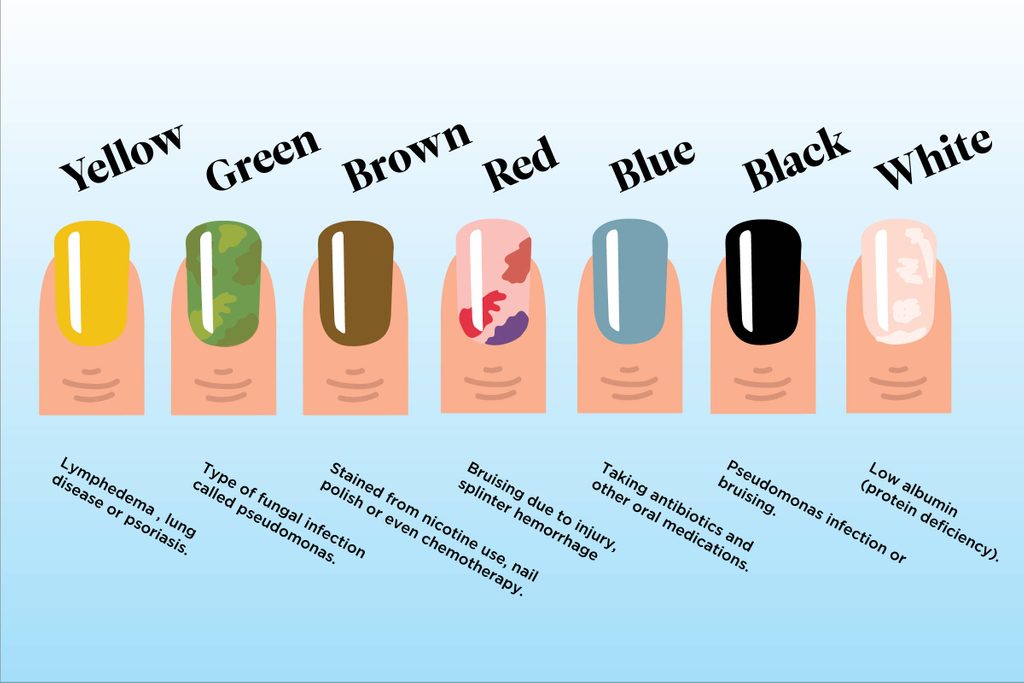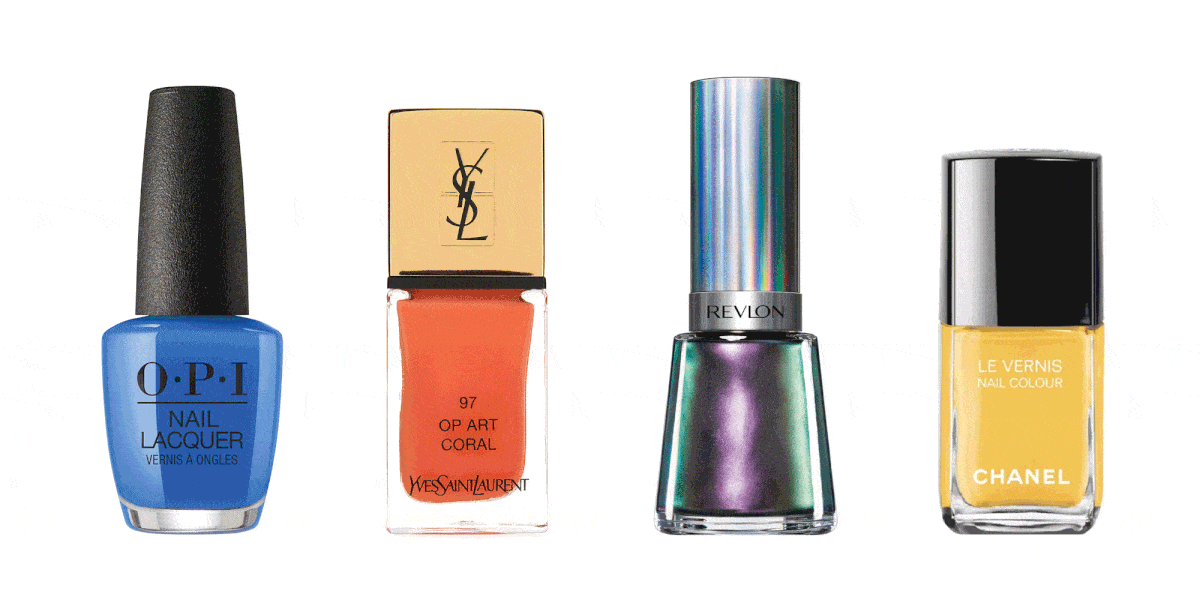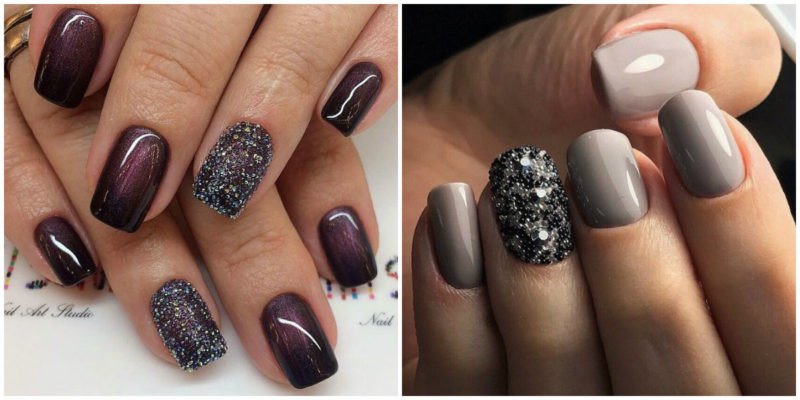The color of our nails can change for a variety of reasons. While some changes can be harmless and temporary, others may be a sign of an underlying health issue. Here are some common causes of changes in nail color: 1. Nutritional Deficiencies: A balanced diet is essential for maintaining healthy nails. A lack of certain nutrients, such as iron, zinc, and biotin, can cause discoloration and weaken the nails. 2. Fungal Infection: Fungal infections can cause the nails to become discolored, thickened, and brittle. This is commonly seen in toenails and can be treated with antifungal medication. 3. Medications: Certain medications, such as chemotherapy drugs and antibiotics, may cause changes in nail color as a side effect. 4. Trauma: Injuries to the nail bed can cause discoloration and can also make the nail more prone to infections. 5. Aging: As we age, our nails may become more brittle and discolored due to a decrease in blood flow and moisture in the nail bed.Causes of Changes in Nail Color
Pay attention to the color of your nails as it can provide valuable insights into your overall health. Here’s what your nail color may be trying to tell you: 1. Pale Nails: If your nails are pale or whitish in color, it may be a sign of anemia, low iron levels, or poor circulation. 2. Yellow Nails: Yellow nails can be a sign of a fungal infection, psoriasis, or diabetes. 3. Blue Nails: Blue nails can indicate a lack of oxygen in the blood, which can be a sign of heart or lung problems. 4. White Spots on Nails: While white spots on nails are often harmless, they can also be a sign of a fungal infection or a zinc deficiency. 5. Red Nails: Red nails may be a sign of a vitamin deficiency, liver disease, or heart problems. 6. Black Nails: Black nails can be caused by trauma, but they can also be a sign of a more serious condition such as melanoma. 7. Green Nails: Green nails can be a sign of a bacterial infection or a reaction to certain medications.What Your Nail Color Says About Your Health
Here are some common nail problems and their treatments: 1. Yellow Nails: If your nails are yellow, it’s important to determine the underlying cause. If it’s a fungal infection, antifungal medication can be prescribed. If it’s due to other factors, such as smoking or nail polish staining, quitting smoking and using a base coat before applying nail polish can help. 2. Blue Nails: If your nails are blue, it’s important to consult a doctor to determine the underlying cause. Treatment will depend on the underlying condition. 3. White Spots on Nails: White spots on nails are usually harmless and will go away on their own. However, if they are persistent, it’s important to consult a doctor to rule out any underlying issues. 4. Red Nails: Treatment for red nails will depend on the cause. If it’s due to a vitamin deficiency, supplements may be prescribed. If it’s due to a more serious condition, such as liver disease, further medical treatment may be necessary. 5. Black Nails: Black nails can be treated by removing the damaged part of the nail and keeping the area clean and dry. If it’s due to a more serious condition, such as melanoma, further medical treatment will be necessary. 6. Green Nails: If your nails are green, it may be a sign of a bacterial infection. Treatment will involve antibiotics prescribed by a doctor.Common Nail Problems and How to Treat Them
Nail discoloration can be concerning, but it’s important to understand that it can be caused by a variety of factors. Here are some things to keep in mind: 1. It’s Not Always Serious: In most cases, nail discoloration is not a cause for concern. It can be caused by harmless factors, such as staining from nail polish or smoking. 2. Pay Attention to Changes: If you notice sudden changes in the color of your nails, it’s important to pay attention and consult a doctor if necessary. This can help catch any underlying health issues early on. 3. Practice Good Hygiene: Keeping your nails clean and dry can help prevent fungal infections and other nail problems. It’s also important to avoid using harsh chemicals on your nails.Understanding Nail Discoloration
Yellow nails can be a sign of a fungal infection, but they can also be caused by other factors. Here’s how to identify and treat yellow nails: 1. Identify the Cause: If your nails are yellow, try to determine the cause. If it’s a fungal infection, you may notice other symptoms such as thickening and crumbling of the nail. 2. Consult a Doctor: If you suspect a fungal infection, it’s important to consult a doctor for proper diagnosis and treatment. They may prescribe antifungal medication or recommend other treatments. 3. Take Care of Your Nails: Practicing good nail hygiene is important to prevent and treat yellow nails. Keep your nails clean and dry, and avoid using harsh chemicals on them.How to Identify and Treat Yellow Nails
Blue nails can be a sign of a lack of oxygen in the blood, which can be caused by a variety of health issues. Here’s what you need to know: 1. Identify the Underlying Cause: Blue nails can be caused by a variety of factors, including heart and lung problems, anemia, and certain medications. It’s important to consult a doctor to determine the underlying cause. 2. Seek Medical Treatment: Blue nails can be a sign of a serious health issue, so it’s important to seek medical treatment as soon as possible. Treatment will depend on the underlying cause.Blue Nails: Causes and Treatment
White spots on nails are usually harmless, but they can also be a sign of an underlying issue. Here’s what you need to know about the causes and treatment: 1. Understand the Causes: White spots on nails can be caused by trauma, a zinc deficiency, or a fungal infection. It’s important to determine the cause in order to receive proper treatment. 2. Consult a Doctor: If the white spots are persistent, it’s important to consult a doctor. They can help determine the underlying cause and provide appropriate treatment. 3. Practice Good Nail Hygiene: Keeping your nails clean and well-moisturized can help prevent and treat white spots on nails.White Spots on Nails: Causes and Treatment
Red nails can be a sign of an underlying health issue, so it’s important to pay attention and seek medical advice if necessary. Here’s what you need to know: 1. Understand the Causes: Red nails can be caused by a vitamin deficiency, liver disease, or heart problems. It’s important to consult a doctor to determine the underlying cause. 2. Seek Medical Advice: If the redness persists or is accompanied by other symptoms, it’s important to seek medical advice for proper diagnosis and treatment. 3. Take Care of Your Nails: Practicing good nail hygiene and maintaining a balanced diet can help prevent and treat red nails caused by a vitamin deficiency.Red Nails: Causes and Treatment
Black nails can be caused by trauma, but they can also be a sign of a more serious condition. Here’s what you need to know about the causes and treatment: 1. Identify the Cause: If your nail has turned black due to trauma, it will usually grow out on its own. However, if there’s no apparent cause, it’s important to consult a doctor to rule out any underlying issues. 2. Seek Medical Treatment: If the black nail is accompanied by other symptoms, it’s important to seek medical treatment as soon as possible. This can help catch any underlying health issues early on. 3. Keep the Area Clean and Dry: If the black nail is caused by trauma, keeping the area clean and dry can help prevent infection and promote healing.Black Nails: Causes and Treatment
Green nails can be a sign of a bacterial infection, so it’s important to seek medical attention if you notice this discoloration. Here’s what you need to know: 1. Understand the Causes: Green nails can be caused by a bacterial infection or a reaction to certain medications. It’s important to consult a doctor to determine the underlying cause. 2. Seek Medical Treatment: If your nails are green, it’s important to seek medical treatment to prevent the infection from spreading. Your doctor may prescribe antibiotics to treat the infection. 3. Practice Good Nail Hygiene: Keeping your nails clean and dry can help prevent bacterial infections. Avoid using harsh chemicals on your nails, especially if you have a history of reactions. Green Nails: Causes and Treatment
The Importance of Nail Bed Color in Identifying Health Issues
What is the Nail Bed?
 The nail bed is the skin that lies underneath the nail plate, which is the visible part of the nail. It is responsible for producing the nail plate and acts as a protective barrier for the fingertip. The nail bed is made up of blood vessels, nerves, and melanocytes, which give the nail its pinkish hue. Changes in the color of the nail bed can indicate underlying health issues and should not be ignored.
The nail bed is the skin that lies underneath the nail plate, which is the visible part of the nail. It is responsible for producing the nail plate and acts as a protective barrier for the fingertip. The nail bed is made up of blood vessels, nerves, and melanocytes, which give the nail its pinkish hue. Changes in the color of the nail bed can indicate underlying health issues and should not be ignored.
What Causes Changes in Nail Bed Color?
 The color of the nail bed can be affected by various factors such as genetics, lifestyle, and health conditions. It is important to pay attention to any changes in color as it can be an early sign of a health problem.
Yellow or Green Nail Beds
can be a sign of a fungal infection or a bacterial infection. Fungal infections are common in warm, moist environments, such as inside shoes, and can cause discoloration and thickening of the nail bed. Bacterial infections can also cause yellow or green discoloration and may be accompanied by swelling and pain.
Blue or Purple Nail Beds
can indicate a lack of oxygen in the bloodstream. This can be caused by a respiratory or circulatory problem, such as asthma, emphysema, or heart disease. In some cases, blue or purple nail beds may also be a sign of Raynaud's disease, a condition that causes the blood vessels to spasm and restrict blood flow to the fingers.
White Nail Beds
can be a sign of anemia, a condition in which the body lacks enough healthy red blood cells to carry oxygen to the tissues. This can cause the nail beds to appear pale or white. In more severe cases, white nail beds may be a sign of liver disease or kidney failure.
The color of the nail bed can be affected by various factors such as genetics, lifestyle, and health conditions. It is important to pay attention to any changes in color as it can be an early sign of a health problem.
Yellow or Green Nail Beds
can be a sign of a fungal infection or a bacterial infection. Fungal infections are common in warm, moist environments, such as inside shoes, and can cause discoloration and thickening of the nail bed. Bacterial infections can also cause yellow or green discoloration and may be accompanied by swelling and pain.
Blue or Purple Nail Beds
can indicate a lack of oxygen in the bloodstream. This can be caused by a respiratory or circulatory problem, such as asthma, emphysema, or heart disease. In some cases, blue or purple nail beds may also be a sign of Raynaud's disease, a condition that causes the blood vessels to spasm and restrict blood flow to the fingers.
White Nail Beds
can be a sign of anemia, a condition in which the body lacks enough healthy red blood cells to carry oxygen to the tissues. This can cause the nail beds to appear pale or white. In more severe cases, white nail beds may be a sign of liver disease or kidney failure.
When to Seek Medical Attention
 If you notice any changes in the color of your nail beds, it is important to consult a doctor for proper diagnosis and treatment. In some cases, changes in nail bed color may be harmless or temporary, but it is always better to be safe than sorry. Your doctor may perform blood tests or other diagnostic procedures to determine the underlying cause of the color change.
In conclusion, the color of the nail bed can be a helpful indicator of one's overall health. Changes in nail bed color should not be ignored and medical attention should be sought if necessary. Healthy and well-maintained nail beds can not only improve the appearance of your hands, but also serve as a window into your overall well-being.
If you notice any changes in the color of your nail beds, it is important to consult a doctor for proper diagnosis and treatment. In some cases, changes in nail bed color may be harmless or temporary, but it is always better to be safe than sorry. Your doctor may perform blood tests or other diagnostic procedures to determine the underlying cause of the color change.
In conclusion, the color of the nail bed can be a helpful indicator of one's overall health. Changes in nail bed color should not be ignored and medical attention should be sought if necessary. Healthy and well-maintained nail beds can not only improve the appearance of your hands, but also serve as a window into your overall well-being.




